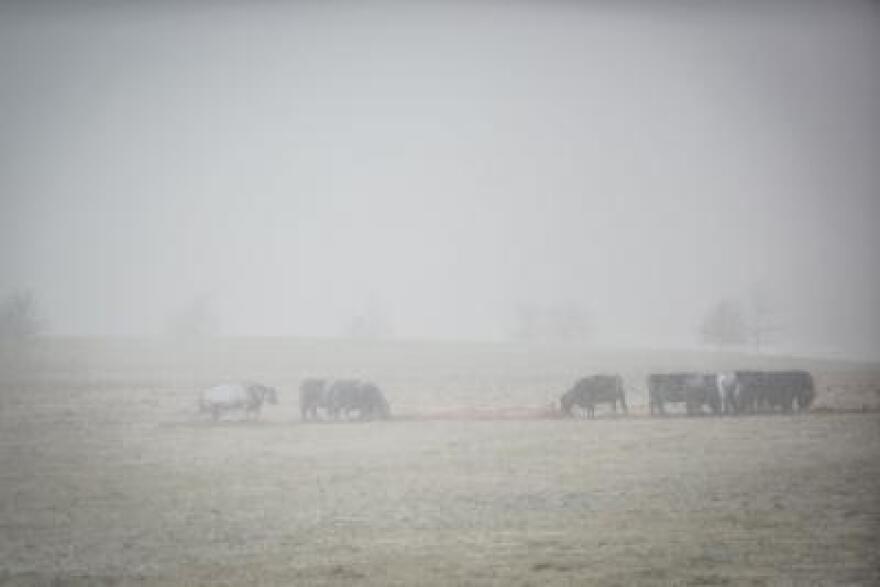Livestock experts are warning producers that sub-zero temperatures and prolonged extreme cold will harm their animals.
University of Kentucky agriculture educators say the cold stress index will hover in the ‘dangerous’ and ‘emergency’ categories for much of the commonwealth between now and possibly early February. As arctic air builds, livestock become vulnerable to the deteriorating outside conditions.
UK associate extension professor Jeff Lehmkuhler says animals have a higher requirement for energy in the colder months, so producers should have high-quality forages and grains on hand to meet their needs. Lehmkuhler said producers should either increase feed intake or increase the energy density of the animal’s diet by feeding higher quality hay or adding more grain or fat to the grain mix.
He recommended that producers continue to monitor cows during the winter and make sure to maintain the animals’ body condition. Lehmkuhler said animals should have adequate shelter, water and dry bedding to make it through the cold stress.
“Producers should move cows to fields with natural windbreaks or provide man-made windbreaks, which are not the same as a barn,” Lehmkuhler suggested.
“Poorly managed barns combined with poor ventilation may actually hamper efforts to improve the environmental conditions.” For example, Lehmkuhler says areas need to be ventilated so that humidity from the animals doesn’t settle and cause pneumonia.
Producers might also need to consider how the cold air could impact fertility.
“There's a risk of getting frostbite on the scrotum which can in moderate to mild cases cause some level of infertility for about 60 days. And so folks that are going to be breeding early in the spring will want to make sure that they do Breeding Soundness Exam.” Lehmkuhler said.
Those calving during winter months, should be prepared to warm calves if needed. He said advanced planning can increase newborn survival.
“Perhaps you've got an area in a barn that you can put some portable gates up. For example, maybe I had a cow that is going to calve in this weather. I can make a quick little stall in the corner of a barn with a couple of gates and some straw and that will greatly help.” Lehmkuhler said.
Keeping an eye on water sources should also be considered.
“Some of our waters have electric heaters in them and those can go bad. And so you may think that you've got those set to work and then we have frozen waters,” Lehmkuhler suggests double checking established sources.
Lehmkuhler says producers should document all efforts in case some animals don't make it through the harsh weather conditions. Indemnity payments could supplement loss, he said, but producers would need to contact their local Farm Service Agency.
In the meantime, he suggests pet owners bring their pets indoors.





